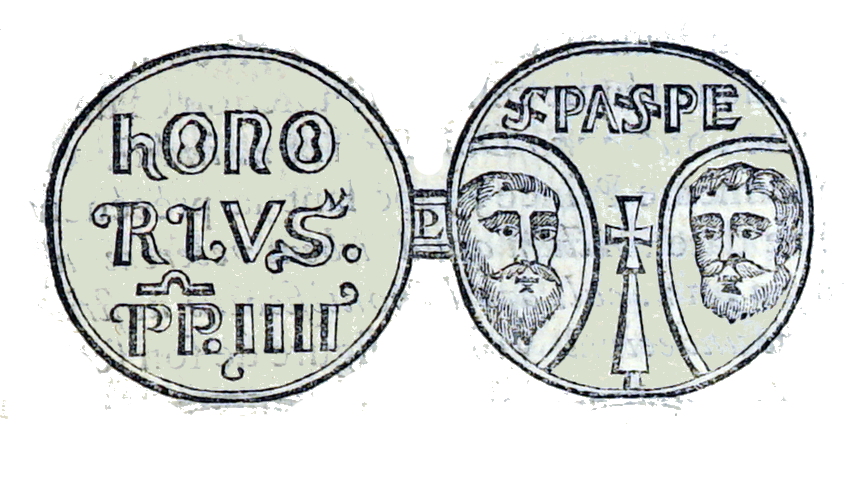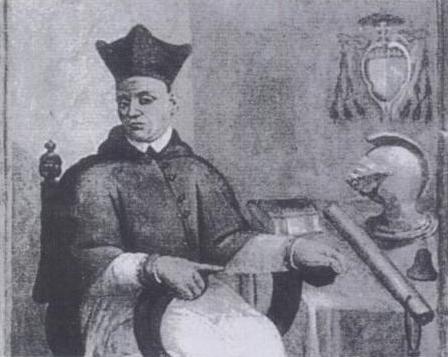|
Castel Savelli
Castel Savelli (also Castel Savello) was a castle near Albano Laziale, in the Lazio region of central Italy. The Savelli family had owned the estate since the 1160s, and build the castle during the papal reign of Pope Honorius III (1216–1227) and Pope Honorius IV (1285–1287). The castle was razed by the forces of cardinal Giovanni Vitelleschi Giovanni Maria Vitelleschi (1396 – 2 April 1440) was an Italian cardinal and condottiere. Biography Vitelleschi was born in Corneto (modern Tarquinia, then part of the Papal States), some kilometers north to Rome. He received a military educ ... in 1435, and never rebuilt. References Buildings and structures in Albano Laziale Castles in Lazio Savelli family {{Italy-struct-stub ... [...More Info...] [...Related Items...] OR: [Wikipedia] [Google] [Baidu] |
Albano Laziale
Albano Laziale (; it, label= Romanesco, Arbano; la, Albanum) is a ''comune'' in the Metropolitan City of Rome, on the Alban Hills, in Latium, central Italy. Rome is distant. It is bounded by other communes of Castel Gandolfo, Rocca di Papa, Ariccia and Ardea. Located in the Castelli Romani area of Lazio. It is sometimes known simply as Albano. Albano is one of the most important municipalities of the Castelli Romani, and a busy commercial centre. It has been also a suburbicarian bishopric since the 5th century, a historic principality of the Savelli family, and from 1699 to 1798 the inalienable possession of the Holy See. It now houses, among other things, the Praetor of the district court of Velletri. The territory of Albano is partially included in the Parco Regionale dei Castelli Romani. Geography Territory The territory of Albano Laziale is and one of the largest of Colli Albani; sixth after Velletri at , Lanuvio at , Rocca di Papa at , Rocca Priora at and Ma ... [...More Info...] [...Related Items...] OR: [Wikipedia] [Google] [Baidu] |
Italy
Italy ( it, Italia ), officially the Italian Republic, ) or the Republic of Italy, is a country in Southern Europe. It is located in the middle of the Mediterranean Sea, and its territory largely coincides with the homonymous geographical region. Italy is also considered part of Western Europe, and shares land borders with France, Switzerland, Austria, Slovenia and the enclaved microstates of Vatican City and San Marino. It has a territorial exclave in Switzerland, Campione. Italy covers an area of , with a population of over 60 million. It is the third-most populous member state of the European Union, the sixth-most populous country in Europe, and the tenth-largest country in the continent by land area. Italy's capital and largest city is Rome. Italy was the native place of many civilizations such as the Italic peoples and the Etruscans, while due to its central geographic location in Southern Europe and the Mediterranean, the country has also historically been home ... [...More Info...] [...Related Items...] OR: [Wikipedia] [Google] [Baidu] |
Castle
A castle is a type of fortified structure built during the Middle Ages predominantly by the nobility or royalty and by military orders. Scholars debate the scope of the word ''castle'', but usually consider it to be the private fortified residence of a lord or noble. This is distinct from a palace, which is not fortified; from a fortress, which was not always a residence for royalty or nobility; from a ''pleasance'' which was a walled-in residence for nobility, but not adequately fortified; and from a fortified settlement, which was a public defence – though there are many similarities among these types of construction. Use of the term has varied over time and has also been applied to structures such as hill forts and 19th-20th century homes built to resemble castles. Over the approximately 900 years when genuine castles were built, they took on a great many forms with many different features, although some, such as curtain walls, arrowslits, and portcullises, were ... [...More Info...] [...Related Items...] OR: [Wikipedia] [Google] [Baidu] |
Lazio
it, Laziale , population_note = , population_blank1_title = , population_blank1 = , demographics_type1 = , demographics1_footnotes = , demographics1_title1 = , demographics1_info1 = , demographics1_title2 = , demographics1_info2 = , demographics1_title3 = , demographics1_info3 = , timezone1 = CET , utc_offset1 = +1 , timezone1_DST = CEST , utc_offset1_DST = +2 , postal_code_type = , postal_code = , area_code_type = ISO 3166 code , area_code = IT-62 , blank_name_sec1 = GDP (nominal) , blank_info_sec1 = €201 billion (2019) , blank1_name_sec1 = GDP per capita , blank1_info_sec1 = €34,300 (2019) , blank2_name_sec1 = HDI (2019) , blank2_info_sec1 = 0.914 · 3rd of 21 , blank_name_sec2 = NUTS Region , blank_info_sec2 = ITE , website www. ... [...More Info...] [...Related Items...] OR: [Wikipedia] [Google] [Baidu] |
Savelli Family
The House of Savelli (de Sabellis in documents) were a rich and influential Roman aristocratic family who rose to prominence in the 13th century, the youngest is still alive today (1626–2022). History The family, who held the lordship of Palombara Sabina, took their name from the '' rocca'' (castle) of Sabellum, near Albano, which had belonged to the counts of Tusculum before it passed to the Savelli. Early modern genealogies of the Savelli, such as the unpublished manuscript "eulogistic treatise" compiled by Onofrio Panvinio, drew connections to Pope Benedict II, a possible but undocumentable connection, and even to the cognomen Sabellius of Antiquity. They provided at least two popes: Cencio Savelli, Pope Honorius III (1216–1227) and Giacomo Savelli, Honorius IV (1285–1287). His father, Luca Savelli, was a Roman senator and sacked the Lateran in 1234. Luca's decision to side with Emperor Frederick II against Honorius III's successor, Gregory, brought various material ... [...More Info...] [...Related Items...] OR: [Wikipedia] [Google] [Baidu] |
Pope Honorius III
Pope Honorius III (c. 1150 – 18 March 1227), born Cencio Savelli, was head of the Catholic Church and ruler of the Papal States from 18 July 1216 to his death. A canon at the Basilica di Santa Maria Maggiore, he came to hold a number of important administrative positions, including that of Camerlengo. In 1197, he became tutor to the young Frederick II. As pope, he worked to promote the Fifth Crusade, which had been planned under his predecessor, Innocent III. Honorius repeatedly exhorted King Andrew II of Hungary and Emperor Frederick II to fulfill their vows to participate. He also gave approval to the recently formed Dominican and Franciscan religious orders. Early work He was born in Rome as a son of Aimerico, a member of the Roman Savelli family. For a time canon at the church of Santa Maria Maggiore, he later became Camerlengo of the Holy Roman Church in December 5, 1189 and Cardinal Deacon of Santa Lucia in Silice on 20 February 1193. Under Pope Clement III and Pope Ce ... [...More Info...] [...Related Items...] OR: [Wikipedia] [Google] [Baidu] |
Pope Honorius IV
Pope Honorius IV (c. 1210 – 3 April 1287), born Giacomo Savelli, was head of the Catholic Church and ruler of the Papal States from 2 April 1285 to his death in 1287. During his pontificate he largely continued to pursue the pro-French political policy of his predecessor, Martin IV. Early career Giacomo Savelli was born in Rome into the rich and influential family of the Savelli. His father was Luca Savelli, who died as Senator of Rome in 1266. His mother Joanna belonged to the Aldobrandeschi family. He studied at the University of Paris, and held a prebend and a canonry at the cathedral of Châlons-sur-Marne. Later he obtained the benefice of rector at the church of Berton in the Diocese of Norwich in England, a nation he never visited. In 1261 he was created Cardinal Deacon of Santa Maria in Cosmedin by Pope Urban IV, who also appointed him papal prefect in Tuscany and captain of the papal army. Cardinal Savelli pursued a diplomatic career. Pope Clement IV sent him and ... [...More Info...] [...Related Items...] OR: [Wikipedia] [Google] [Baidu] |
Giovanni Vitelleschi
Giovanni Maria Vitelleschi (1396 – 2 April 1440) was an Italian cardinal and condottiere. Biography Vitelleschi was born in Corneto (modern Tarquinia, then part of the Papal States), some kilometers north to Rome. He received a military education, which he refined as apostolic protonotary under Pope Martin V. The fighting bishop of Recanati from 1431, and afterwards made a cardinal, he was commander of the papal armies of Pope Eugene IV when the Colonna faction at Rome, infuriated by the reversal of their fortunes when Eugene succeeded Martin V (a member of the Colonna), backed an insurrection that raised a temporary republic at Rome and forced Eugene into exile at Florence in May 1434. The city was restored to obedience by Giovanni Vitelleschi in the following October, in a display of ferocious cruelty. Vitelleschi abrogated all Roman rights and had the Roman Senate declare him ''tertius pater patriae post Romulum'' ("the third Father of his Country since Romulus"). He comma ... [...More Info...] [...Related Items...] OR: [Wikipedia] [Google] [Baidu] |
Buildings And Structures In Albano Laziale
A building, or edifice, is an enclosed structure with a roof and walls standing more or less permanently in one place, such as a house or factory (although there's also portable buildings). Buildings come in a variety of sizes, shapes, and functions, and have been adapted throughout history for a wide number of factors, from building materials available, to weather conditions, land prices, ground conditions, specific uses, prestige, and aesthetic reasons. To better understand the term ''building'' compare the list of nonbuilding structures. Buildings serve several societal needs – primarily as shelter from weather, security, living space, privacy, to store belongings, and to comfortably live and work. A building as a shelter represents a physical division of the human habitat (a place of comfort and safety) and the ''outside'' (a place that at times may be harsh and harmful). Ever since the first cave paintings, buildings have also become objects or canvasses of much artistic ... [...More Info...] [...Related Items...] OR: [Wikipedia] [Google] [Baidu] |
Castles In Lazio
A castle is a type of fortified structure built during the Middle Ages predominantly by the nobility or royalty and by military orders. Scholars debate the scope of the word ''castle'', but usually consider it to be the private fortified residence of a lord or noble. This is distinct from a palace, which is not fortified; from a fortress, which was not always a residence for royalty or nobility; from a ''pleasance'' which was a walled-in residence for nobility, but not adequately fortified; and from a fortified settlement, which was a public defence – though there are many similarities among these types of construction. Use of the term has varied over time and has also been applied to structures such as hill forts and 19th-20th century homes built to resemble castles. Over the approximately 900 years when genuine castles were built, they took on a great many forms with many different features, although some, such as curtain walls, arrowslits, and portcullises, were ... [...More Info...] [...Related Items...] OR: [Wikipedia] [Google] [Baidu] |






